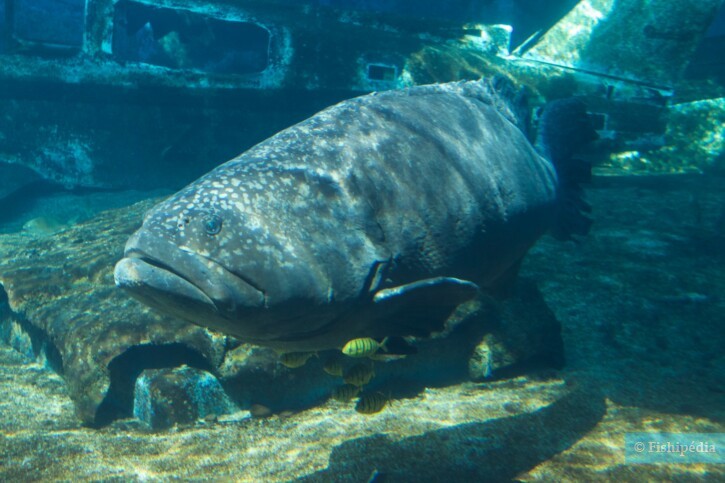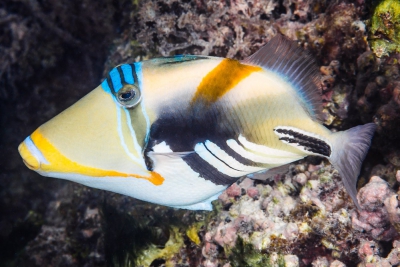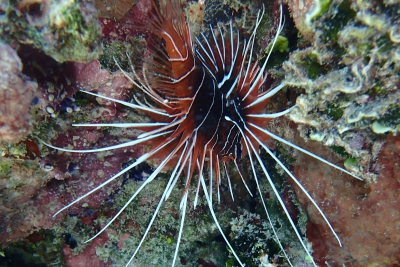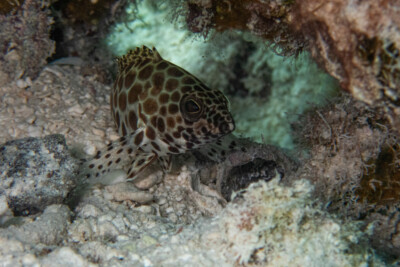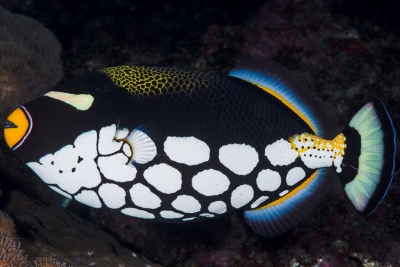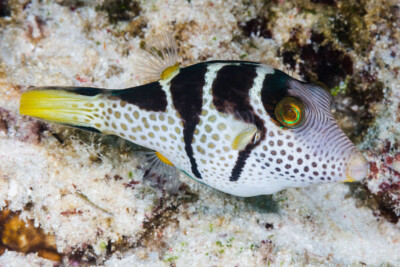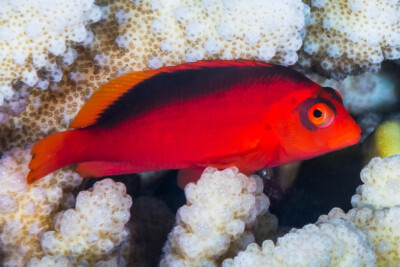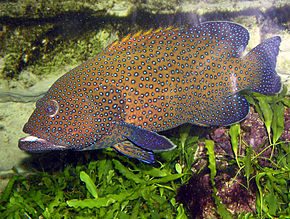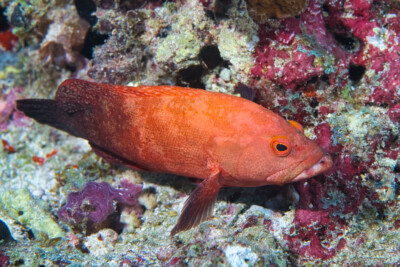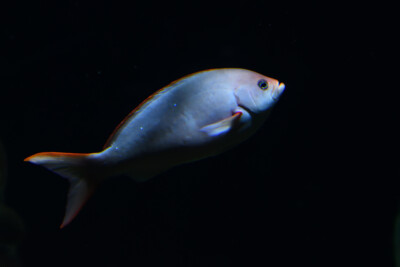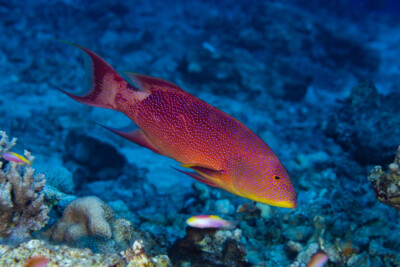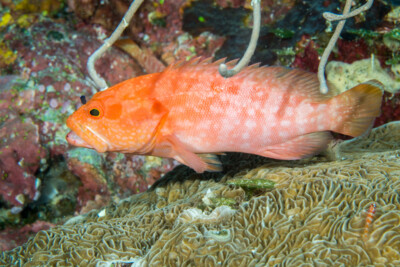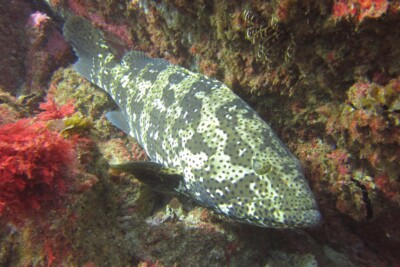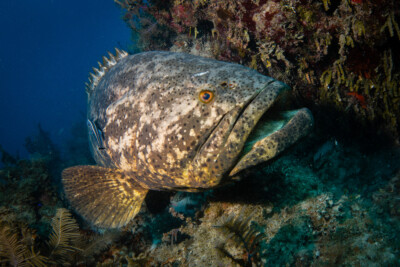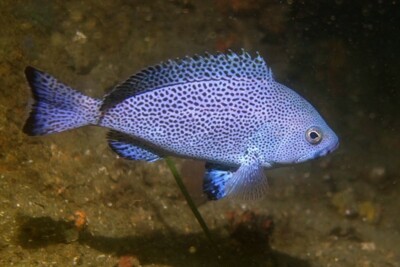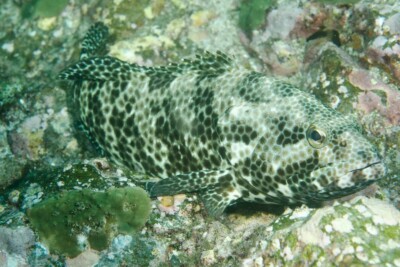giant grouper
| Family | Epinephelidae |
|---|---|
| Genus | Epinephelus |
| IUCN category (World) | DD |


Introduction
Epinephelus lanceolatus, commonly known as giant grouper, is a salt water fish.
This sheet is currently being prepared. The texts currently proposed come from our data model or are being drafted. To request priority for this content, you can write to us HERE.
Who is it?
Genus Epinephelus
In 2019, the genus Epinephelus comprised 87 species according to FishBase. These fish are commonly known as "groupers" and belong to the "serranid group" (Serranidae).
They are territorial carnivores with elongated and robust bodies. They have imposing heads with canines in the front of their jaws and protractile mouths. All species possess 10 or 11 dorsal spines.
Most species are found in coral reefs or rocky areas, with some exceptions (such as E. aeneus, E. bruneus, or E. areolatus) living in sandy, muddy, or silty bottoms. Adults are typically observed at depths ranging from 10 to 200 meters. Most Epinephelus are recognized as protogynous hermaphrodites, meaning they are born as females and become males as they grow. However, not all females may change sex, and some males may not go through this commonly accepted stage.
These fish are highly valued commercially for consumption and recreational fishing, but they are vulnerable to overfishing due to their slow growth, late maturity, and the formation of reproductive aggregations. Overfishing, particularly targeting mature individuals, can lead to sex-ratio imbalances and affect reproduction. Several groupers are now the subject of aquaculture farms (especially E. coioides and E. malabaricus).
According to the IUCN, overfishing and pollution have already caused a significant decline in the populations of many groupers, and several species are endangered.
Morphology
-
Average size200 cm
-
Maximum size270 cm
-
Mimicryrocky bottoms
-
Average size200 cm
-
Maximum size270 cm
-
Mimicryrocky bottoms
How to recognize This fish ?
The giant grouper measures around 200 cm. The dominant males can however reach 270 cm. This fish is tricolore with a predominantly jaune, marron and gris body.
Sexual dimorphism
The adult male is bigger than the female.
Behaviour & Life cycle
-
dietcarnivorous
-
Sociabilitysolitary
-
territorialYes
-
Way of livingdiurnal
The giant grouper hunts in the stalk and is one of the predators of its biotope. Opportunistic, it does not hesitate to attack any smaller animal nearby.
The giant grouper is a fish solitary naturally found at mid-depth and near the bottom. This species is carnivorous .
The giant grouper is a territorial animal that does not tolerate any incursions into its living area. It is particularly virulent against other territorial species and it can provoke heated fights. Relationships between conspecifics are also hectic, with each seeking to secure its place.
Reproduction
-
Reproductionovipare qui pond en eau libre
The giant grouper is a fish ovipare qui pond en eau libre.
Risks for humans
-
VenomousNo
-
BiteYes
This species can attack if it feels threatened. It is important to be particularly vigilant especially during dives or fishing sessions.
Origin and distribution
What is its habitat?
Natural environment characteristics
-
Temperature24 - 29 °C
-
Depth1 - 200 m
Biotope presentation
The giant grouper is most often found at a depth between 1m and 200m. However, it is not impossible to find this species at other depths.
Species of the same biotope
To go further
Sources & Contributions
Participation & Validation
The Fishipedia team and specialist contributors are committed to providing high-quality content. However, although the information comes from scientific sources or testimonials from specialists, the cards may contain inaccuracies.

Benoit Chartrer
Translation
Translation done with the valuable contribution of our translators, who make this information available to a wider audience. We sincerely thank them for their commitment.
Scientific partners
Tags
#Epinephelidae
#Epinephelus
#barrière de corail
#fonds rocheux
#fonds vaseux
#lagon
#mangrove
#récifs extérieurs
#zone mixte
#Bay of Bengal
#Persian Gulf
#Great Barrier Reef
#East China Sea
#Philippine Sea
#Red Sea
#South East Asian Seas
#Indonesian seas
#East Indian Ocean
#western Indian Ocean
#Western Tropical Pacific Ocean
#Hawaii
#Mauritius
#Réunion
#French Polynesia
Species of the same family
Same genus
Species of the same biotope
